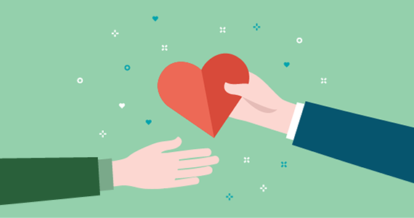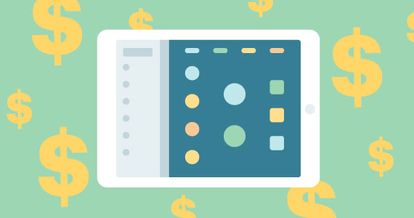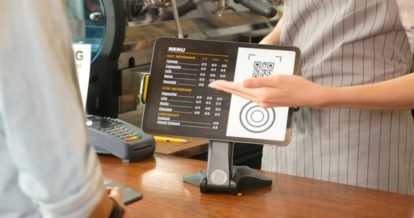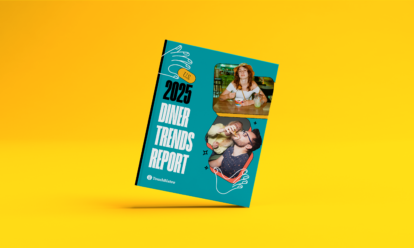Did you know adopting a restaurant customer loyalty program can increase sales by 30%?
You work hard to attract new customers: you’re committed to health and safety protocols, you dedicate time and effort to your social media presence, and you make sure your menu is always on point – including your takeout and delivery items.
But what are you doing to keep your guests coming back and spending more at your restaurant?
Acquiring new customers is up to five times more expensive than retaining the ones you have, and today’s diners are even more discerning about where they spend their time and money. This means treating your guests like gold is a smart, inexpensive way to increase your sales.
In this guide to restaurant customer loyalty programs, we’ll cover:
- How loyalty programs work for restaurants
- Examples of great restaurant loyalty programs
- 3 tips for a successful restaurant customer loyalty program
Let’s get started!
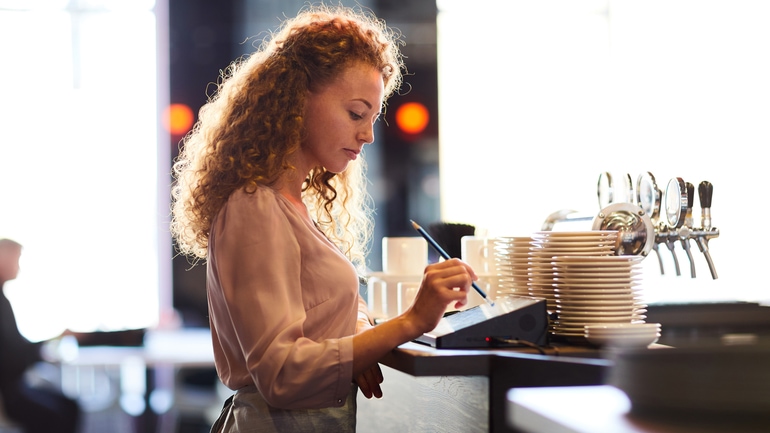
How Does a Restaurant Customer Loyalty Program Work?
A restaurant loyalty program incentivizes your guests to make repeat visits to your restaurant with rewards such as discounts, points, and special offers. Loyalty programs also help you use data to create customized offers and build personal relationships with your customers.
Today, restaurant POS technology and integrations have made it easier to create loyalty programs that boost your bottom line and allow you to track the success of your efforts. Here’s how these kinds of restaurant customer loyalty programs work at a high level:
- Guests sign up for your loyalty program at your restaurant or digitally, through your website or customer app.
- Each time a guest visits your restaurant, or orders takeout or delivery from you, they earn points.
- Points lead to rewards like discounted or free menu items, which entice your guests to visit your restaurant more often.
- Guests continue to receive personalized offers as you collect more information about their preferences and spending habits through your loyalty program.
- Personalized offers increase the likelihood of these customers redeeming the offers and rewards, and returning to your restaurant again to earn more – and spend more.
In short, the loyalty program cycle is one where everyone wins! A great restaurant customer loyalty program will keep your guests happy, returning to your restaurant, and spending more once they’re there.
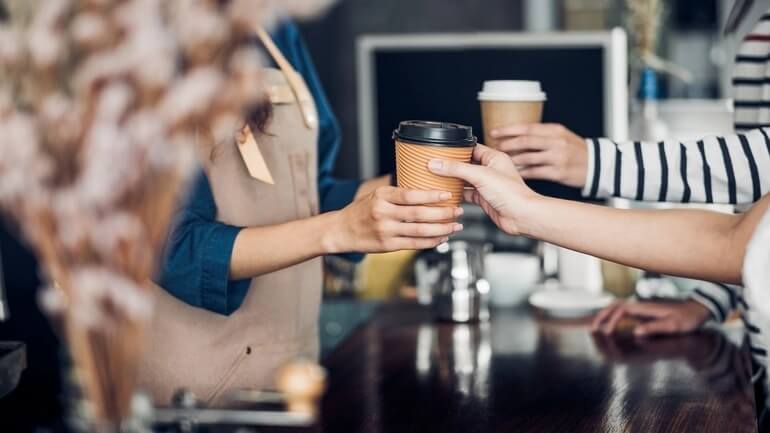
Examples of Great Restaurant Loyalty Programs
Now, it’s time to get inspired. Let’s dive into a few examples of brands that have created successful loyalty programs.
1. Panera
A month before the COVID-19 pandemic hit, the fast casual chain Panera launched an unlimited subscription coffee program, which was the first of its kind in the industry. Despite the economic effects of the public health crisis, Panera’s loyalty program has already amassed 835,000 subscribers, with 700,000 signing up in July alone.
This initiative is an excellent example of how you can keep a loyalty program simple by knowing what your customers want, then delivering exactly that. People love their coffee! And unlimited coffee for only $8.99 a month? Even better.
2. Starbucks
This coffee giant has successfully leveraged mobile marketing for restaurants. Using its mobile customer loyalty app, Starbucks sends notifications to users offering opportunities for them to earn double the rewards on their purchases.
In addition, during Starbucks’ downtime (2:00 – 4:00 p.m.), the company sends its loyalty program members a notification to claim a 2-for-1 drinks promotion. This offer helps entice people to bring a friend for coffee, increasing traffic and sales.
3. MOD Pizza
Moving away from the coffee theme, let’s explore another fan favorite: pizza. The nationwide American artisan pizza chain MOD Pizza has also hopped on the mobile marketing train, understanding it’s a wise move to show up where your customers are – in this case, on their smartphones.
MOD Pizza offers an in-app restaurant customer loyalty program where members earn a point for each dollar they spend and get a free menu item with every 150 points. Another bonus? Customers also receive 75 points automatically upon signing up for the program.
4. Local 149
Customer loyalty programs aren’t only for national or international restaurant chains. Local restaurants can get in on the fun too. And right now is a perfect time to try it.
At Local 149, a restaurant in South Boston, guests can sign up for a loyalty program to earn $25 for every $250 spent. Local 149 is part of a group of six unique restaurants throughout Massachusetts, and customers can earn and use rewards at any location.
5. Cheesecake Cafe
The Cheesecake Cafe is a Canadian restaurant in Calgary, Alberta that has been in business for over 25 years and understands how to keep guests happy. Cheesecake, obviously. But, there’s a bit more to it than that.
As part of the Cheesecake Cafe’s rewards program, guests earn seven cents in Loyalty Dollars for every $1 spent. The program offers multiple ways to collect loyalty dollars, including having lunch, dinner, or drinks in-house, as well as ordering takeout or buying gift cards.
3 Tips for a Successful Restaurant Customer Loyalty Program
Now you know how a restaurant loyalty program works and have a few examples of successful programs to emulate. Now it’s time to get into specific tips to guide you as you build your own loyalty program.
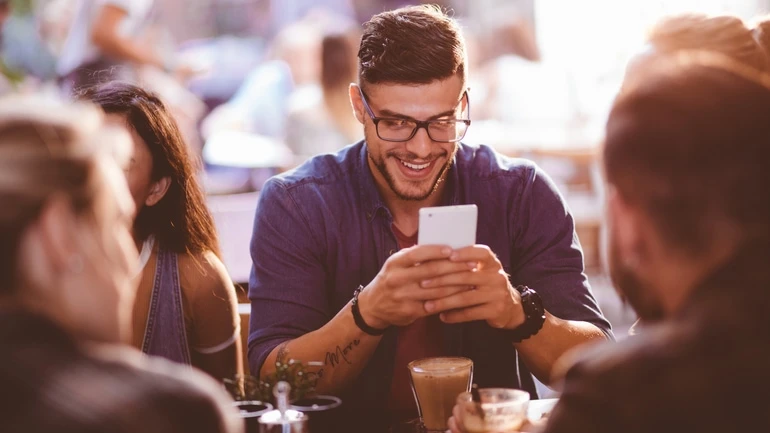
1. Reward Your Customers with Points
Have you ever played Candy Crush or Farmville? If so, you’ve likely experienced the rush of snapping up 10,000 points for finally scoring some rare item you’ve been trying to get your hands on for ages.
People love playing games, which is why restaurant gamification loyalty programs work so well. According to Snipp, brands that use gamification to engage customers enjoy a 47% increase in engagement and a 22% increase in brand loyalty. Points are the most common form of currency within games around the world, so it’s no accident that businesses have adopted points systems to reward their customers.
Gamification loyalty programs provide your guests with a sense of achievement for dining at your restaurant as they rack up points for every dollar spent. So make coming to your restaurant a game. Reward your customers with double the points if they visit your restaurant two days in a row, or five times the points if they invite a friend to join your loyalty program.
The more points or rewards your customers earn, the more they’ll want to come back to earn additional points. When you pair a loyalty program with an exceptional customer experience, you’re creating a dream environment for repeat business.
Gamification Reward Structures Explained
There are two main ways to structure your restaurant customer loyalty program:
- Dollars to Points Ratio: You get to decide the exact numbers to use, but as an example, you could set up your loyalty program so that every $20 a guest spends at your restaurant equals five points. When that guest earns a certain number of points, they could get a discounted (or free) drink or meal.
- Number of Purchases: This option is more straightforward. For example, you could offer every tenth appetizer or dessert at 50% off, or for free. Notice how we didn’t suggest you stop at every fifth dish? You want to keep your customers in the game for a while before handing out rewards.
Chipotle: Gamification at Work
Chipotle Mexican Grill made headlines recently with news that the restaurant gained 8.5 million loyalty program members in under a year. Chipotle’s loyalty program is built on gamification, offering customers 10 points for every dollar they spend at the restaurant, with a free meal when they earn 1,250 points.
Now that’s one way to heat up business!
2. Keep in Touch with Your Customers via Email and Text
Over 50% of U.S. consumers are loyal to brands that interact with them through their preferred communication channels. Restaurants are catching onto this, and using targeted communication via email and text to bring guests back for promotions, happy hours, events, or for special occasions like their birthdays.
A first-class loyalty program enables you to create custom audiences for your communications, so you can target specific groups of customers based on your desired criteria. For example, if you’re about to release a new premium menu item and want to let your big spenders know, your loyalty program can help your filter out the guests who spend over a certain amount and then send a promotional message to that specific group.
The key to successful email and text marketing is a meaningful exchange. If a guest likes your restaurant enough to give up their email address or phone number, it’s your job to provide them with something of value in return. You can even use restaurant survey questions to directly ask customers what they think of your brand and what kind of content they’d like to receive.
Mastering Email Marketing
If you want to get a solid bang for your buck when it comes to marketing your restaurant customer loyalty program, it’s time to start leveraging email marketing. Email offers the greatest ROI of any marketing tactic. In fact, restaurateurs can expect to earn between $38 and $44 for every dollar they spend on email marketing – if it’s done well.
The key to using email marketing is to deliver value that’s above and beyond what you offer the masses by creating targeted emails meant just for members of your loyalty program. For example, you might send one email to your regular customer list announcing your new seasonal menu, then send a different email to your loyalty program members with a 20% off coupon to entice them to try the new dishes.
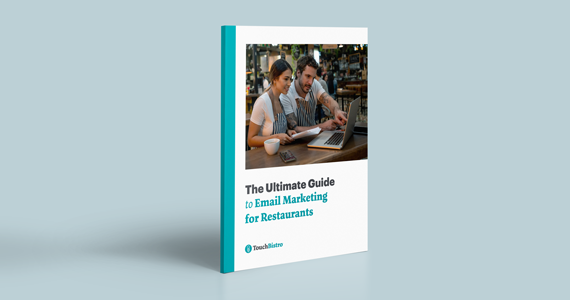
Learn how to set up an email marketing strategy for your business in 6 easy steps.
Tips for Text Marketing
When done right, text message (or SMS) marketing can feel intuitive, like that friend who always knows just what to say at the right moment. But when done wrong, it can feel intrusive and off putting. That’s why it’s essential to ensure your guests opt-in to receive texts from your restaurant. You could try encouraging sign-ups through a restaurant loyalty program by offering a percentage off their current meal.
Once you’ve cleared the opt-in hurdle, the next step is to provide value to your subscribers in a way that makes it clear what they should do next. For example, you could ask your subscribers for information like their date of birth, and tell them they’ll get something special on their birthday, like a free dessert. Then when it comes time to send your customer a text with the offer, they won’t feel like you’ve invaded their space – they’ll feel like they’ve gained something for trusting you with their information.
Successful Email and Text Restaurant Marketing Campaigns
Need some email and text marketing inspiration? These restaurants are great examples:
- Backyard Burgers: This regional chain headquartered in Nashville immediately sends its email subscribers a welcome email with a coupon for a free burger upon signing up for their email list. This is a wise move, considering that nearly 75% of people expect to receive a welcome email when they opt-in to a subscriber list. With an open rate of almost 70% on this email campaign, Backyard Burgers has hit a home run.
- Olive Garden: This international Italian-American style chain uses text message marketing to send subscribers special offers and coupons. Olive Garden sends texts to its list approximately every 11 days to ensure the restaurant stays top of mind with guests, without over communicating.
3. Collect Data on What Your Customers Want
Gamification and communication need one more ingredient to truly have an effect: customization. When you know your customers well, you can begin to develop meaningful relationships by personalizing their experience with your restaurant’s brand.
So, what’s the secret sauce? Data.
Collecting the right data in your restaurant CRM is imperative to creating a restaurant customer loyalty program that’s built on informed business decisions. Here are a few examples of data you should try to capture:
- Whether your guests dine in, or order takeout and delivery
- What time of day they visit your restaurant
- How much money they typically spend
- What menu items they choose (as well as the items they avoid)
- Whether they have any dietary restrictions
- Personal information, such as their birthday
The more you know about your guests, the better you can tailor your loyalty program offers to.
In addition, an effective restaurant loyalty program will provide you with data on how your customers are actually responding to the offers you send them. You can use this information to your advantage, too.
For example, if most of your guests come back on their birthdays to redeem their offers, you know you have a shot at getting them to spend more once they’re in the door. You may want to further gamify their birthday experience by offering double the amount of points if they spend a certain dollar amount at your restaurant on their birthday.
Similarly, if you notice that guests aren’t responding to your two-for-one happy hour special, maybe it’s time to rethink that promotion.
The possibilities are endless, so make it a point to gather data to see how you can make the most of your loyalty program and drive repeat business. Don’t be afraid to test different approaches, either.
For example, Anthony’s Coal Fired Pizza, a restaurant with multiple locations in the eastern U.S., used a data-driven loyalty program to track guest preferences and bring 1,800 lapsed customers back into the restaurant. Anthony’s used its free WiFi service to collect customer information during the login process (with permission), and then fed this data into its rewards platform to enrich its guest profiles.
“By combining timely and relevant communication with a rewards program, we’re getting better performance and value from our customer communications,” Skip Kimpel, VP Information Technology, Anthony’s Coal Fired Pizza, said in a statement published in Hospitality Technology.
Creating a memorable customer experience is both an art and a science – but ultimately, it’s about making your customers feel special. A great loyalty program uses data to tell you more about your guests so you can reward them in ways that are meaningful to them.
Turn Your Customers into Your Biggest Fans
Gamification, communication, and customization – these are the ingredients of a restaurant loyalty program that will keep customers coming through your door, ordering online, and increasing their spending. Use technology to drive customer loyalty, and you may be able to kick your customer marketing strategy into overdrive.
And now you’ve got the scoop on restaurant customer loyalty programs, you can move forward on creating your very own loyalty program.
Looking for the right tech to get your loyalty program off the ground? Check out TouchBistro Loyalty to see how our solution can help your restaurant increase revenue and drive repeat business.
Free Restaurant Cleaning Checklist
Sign up for our free weekly TouchBistro Newsletter

